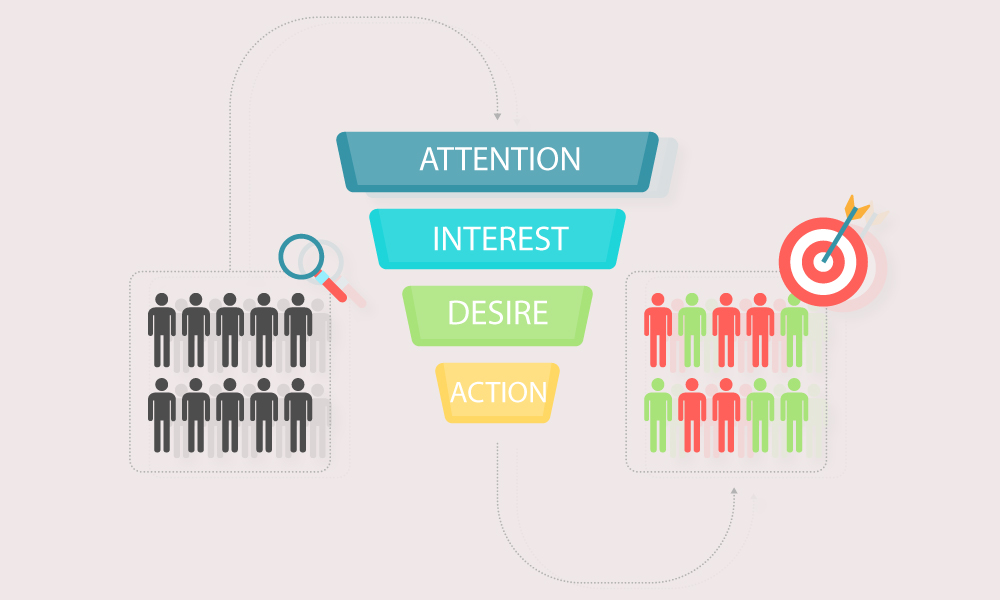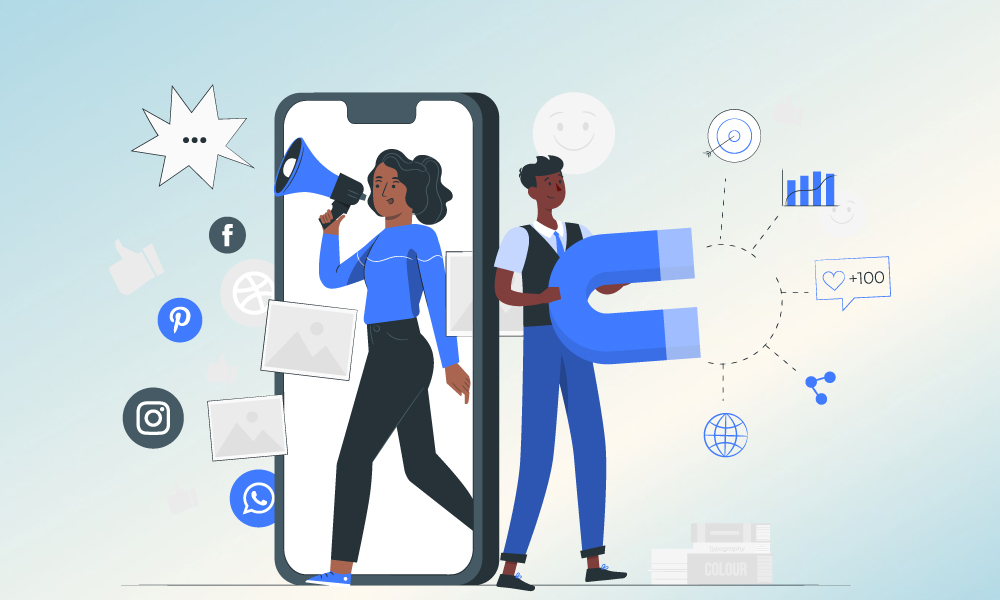Okay, so what exactly is a lead?
A lead is simply a potential customer. This is somebody who has stumbled upon your company. This can be by pure luck, but most often it’s because of your targeted marketing efforts.
The lead is not yet a customer, and realistically, they may never be (but of course we’re thinking positive). They know nothing about your company yet and thus they may be reluctant to make a purchase. Through email and content marketing, as well as lead nurturing and other tactics, you can engage with your leads. Doing so allows you to get to know the lead a little better. You can glean their pain points and assign them to a bucket. These buckets can be very general, such as location or gender, or more specific.
Once you know more about your lead, you can present your product/service as a solution to their problem. If the lead makes a purchase and/or opts into your email list, you consider them a customer. This is known as lead conversion.
Converting leads is a continuous process. You should always have an influx of new leads that you can convert. After all, conversions won’t be successful very often. With a healthy amount of leads to sift through, you'll always have enough potential customers to engage with.
Venture Harbour reports that most leads and website visitors (up to 96%!) have no intention of making a purchase the first time they visit your website. If you can find a way to connect with your audience, you can change that.
The way you convert leads is through lead marketing, which begins with lead generation. We will be exploring lead generation in detail in the other chapters of this guide, so we’re just going to provide you with a basic definition and some stats in this one.
Lead marketing is the set of tactics you employ to convert leads into customers. They include content marketing, email marketing, and other marketing channels, such as social media. Through all these channels, you’re engaging with and nurturing the leads to encourage them to make a purchase and become repeat customers.
One option you can use for higher conversions islanding pages. According to HubSpot data from 2018, B2B companies are generating more leads with strategic landing pages than ever. Up to 68% of the respondents mentioned that’s how they kickstarted their respective lead generation campaigns.
Interactivity in your email and/or content marketing is another effective strategy. This can include videos, mini games, or anything else that gets the leads engaging with your content. Data from HubSpot notes that more than half (53%) of content marketers were successful by employing this tactic.
Good, old-fashioned methods still work, too. HubSpot also shares in their same report that email is effective for many B2B marketers (79%) who are trying to boost their lead generation and conversion rates.
Content marketing also has its place. The Venture Harbour article we mentioned above explains how when B2B companies use content marketing, 93% of them enjoy an uptick in leads. This numbers is in comparison with traditional strategies.
In the last section, we talked about what are known as buckets. You can also refer to these as lead categories. When your leads first come across your website, they don’t know anything about you. You also don’t know anything about them.
Through some contact via email or other means, you start to get a fuller picture of the lead. You can then categorize them into a bucket.
Doing so is beneficial in several ways. First, putting leads into buckets lets you create targeted campaigns that will appeal to your various lead segments. Second, you can determine which of your leads is most qualified and focus your attention and efforts on them.
These leads are called marketing qualified leads or MQLs. As the name suggests, MQLs are more qualified than most of your other leads.
What does qualified mean in this instance? This lead has a higher chance of making a purchase and thus converting into a customer.
How can you tell if a lead is an MQL or not? You can use a lead scoring system on said lead to track the companies they’ve engaged with in the past, the type of content they’ve downloaded, and the websites they’ve been on. If the lead has done business with companies like yours, they may be more likely to make purchases from you. That makes them an MQL.
The approach you take towards an MQL will differ compared to your standard lead. There’s less need to entice them to buy since they may be readier to do so. You can skip a few steps of your lead nurturing process, then.
Sales leads are different from your regular lead. They’re also not the same as MQLs. Instead, these leads go directly to your sales pipeline. You may find sales leads via sales marketing, third parties, direct mailings, trade shows, and even advertising.
TThey’re different from sales prospects as well. If that seems confusing, don't worry. Later in this guide we’ll make a comparison of the differences between leads and prospects.
Getting back to sales leads, these leads are managed through your sales team, as the name might have told you. Once that team has the sales lead’s basic contact info, they can begin reaching out and engaging with the lead. Email marketing is used primarily for this, but it can be augmented by direct marketing and even outbound sales calls.
The purpose of all this contact is to decipher the lead quality. In this regard, this is just like sorting any other lead into buckets.
Finally, we thought we’d complete the first chapter of this guide by outlining the difference between inbound and outbound leads.
If you’re familiar with inbound vs. outbound marketing, understanding these lead types will be simple. Just in case you need to know, we’ll explain both inbound and outbound leads in this section.
Let’s start with inbound leads. One way you can connect with leads in an inbound fashion is by posting awesome content on your blog. Perhaps you end your blog post by asking the reader a few questions and encouraging comments. Maybe you include opt-in boxes midway through your blog post asking leads to sign up to your email list.
Whatever you do, it’s up to the lead to take the next step. They can also do so at their leisure, taking the time to research your company before making any big decisions.
It may seem scary to put the ball in the hands of someone who can just run off with it, but inbound lead generation can be beneficial. Letting the lead take their time and come to their own conclusions can breed respect and likeability for your company. After all, no one wants to be bombarded with emails and product/service notices.
Inbound lead generation also ensures that by the time the leads reach out to you, they’re really interested. You can call them qualified then.
What about outbound lead generation? This is the more old-school way of doing things. You reach out to your lead via email, chat, social media, phone, or any other way of contact that’s available.
If you remember the days of getting pamphlets and catalogues in the mail from companies as well as hearing ads on the radio or seeing them in the newspaper, those are all outbound marketing tactics. These tactics also include the dreaded cold call. Cold calling isn’t always all bad, and it’s still used in outbound lead generation.
However, given that some marketers call outbound lead generation/marketing “interruption” marketing, it’s not the best means of converting leads to customers.
That doesn’t mean you should discard outbound lead generation entirely. If you already have a somewhat receptive audience, like QMLs, outbound lead generation can work. It just shouldn’t be your go-to when reaching out to new leads.
In this chapter of our lead generation guide, we touched upon “what is a lead?” We also talked about several lead types, including sales leads, qualified marketing leads, inbound leads, and outbound leads.


